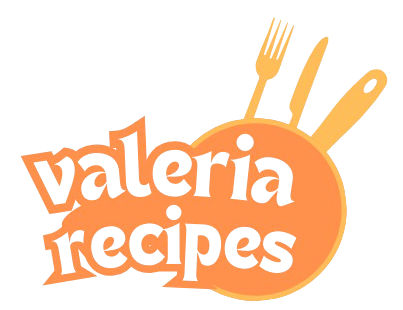Cheesecake is a rich, creamy dessert loved by many around the world. While there are numerous variations, the most popular types are New York-style, no-bake, and ricotta cheesecake. In this article, we’ll take a closer look at each of these types, explore other cheesecake variations, and discuss toppings, crust options, and some frequently asked questions.
A Brief History of Cheesecake
Cheesecake has a long history that dates back to ancient Greece, where it was a popular source of energy. Over the years, it spread across Europe, and each region developed its own unique take on the dessert. Today, cheesecake is enjoyed in various forms, but New York-style, no-bake, and ricotta cheesecakes remain the most beloved.
If you’re looking for a quick and easy recipe, you might want to try this pineapple cheesecake recipe. It offers a refreshing twist on the classic no-bake cheesecake, perfect for hot summer days.

The Three Main Types of Cheesecake
1. New York-Style Cheesecake
First, we have New York-style cheesecake, which is famous for its dense and rich texture. Made with large amounts of cream cheese, it has a smooth and creamy consistency that many people love.
- Ingredients: Cream cheese, heavy cream, and eggs.
- Baking method: Baked in a springform pan, often using a water bath to prevent cracking.
In addition, this cheesecake is often topped with fresh fruit or a simple layer of sour cream. If you want to explore other recipes, try pairing your cheesecake with this delightful lemon cream cheese recipe for a tangy flavor boost.
2. No-Bake Cheesecake
Another option is no-bake cheesecake, which is ideal for those who want a quick and easy dessert. Unlike the baked versions, it doesn’t require any cooking. Instead, it relies on gelatin or whipped cream to set the cream cheese filling.
- Ingredients: Cream cheese, gelatin, or condensed milk.
- Texture: Smooth, creamy, and perfect for warm weather.
No-bake cheesecakes are easy to customize with different flavors and toppings. For instance, a tropical version might include coconut or fresh fruit. If you enjoy tropical flavors, consider serving it alongside coconut cookies for a perfect pairing.
3. Ricotta Cheesecake (Italian-Style)
Finally, ricotta cheesecake offers a lighter, fluffier alternative to the traditional New York style. Made with ricotta cheese, this Italian variation has a slightly drier texture but remains incredibly flavorful.
- Ingredients: Ricotta, eggs, and sometimes lemon or almond flavors.
- Baking style: Often baked, resulting in a light, airy texture.
This cheesecake is perfect for those who prefer a dessert that is less rich, yet still delicious. The subtle flavors of lemon or almond make it a favorite for many people who enjoy lighter desserts.

Other Cheesecake Variations
Apart from the three main types, several other cheesecake variations are worth trying:
- Japanese Cheesecake: Light and fluffy, thanks to the use of whipped egg whites in the batter.
- Vegan Cheesecake: Made with cashew or tofu, offering a dairy-free option.
- Savory Cheesecake: Includes savory elements like herbs and cheeses, making it a unique appetizer.
Each variation offers something different, allowing you to choose the best cheesecake based on your preferences and dietary needs.

Cheesecake Crust Options
The crust of a cheesecake plays a crucial role in enhancing the flavor and texture. Here are a few popular options:
- Graham cracker crust: The most common choice for both baked and no-bake cheesecakes.
- Cookie crust (e.g., Oreo or shortbread): Adds sweetness and extra flavor.
- Nut-based crust: Provides a crunchy texture and subtle flavors.
However, some cheesecakes, such as the Japanese version, often don’t include a crust, allowing the soft texture to stand out.
Cheesecake Toppings and Flavors
Toppings can elevate the flavor and presentation of any cheesecake. Some classic options include:
- Fresh fruit (e.g., strawberries, blueberries, or raspberries).
- Chocolate or caramel drizzle.
- Whipped cream or a layer of sour cream.
To add more flavor, you can incorporate ingredients like chocolate chips, pumpkin puree, or spices. For a unique flavor combination, try pairing your cheesecake with these orange brownies for a burst of citrus.
FAQs About Cheesecake
What Is the Most Popular Type of Cheesecake?
The most popular type is New York-style cheesecake, known for its dense, creamy texture and slightly tangy flavor.
What Is the Difference Between Baked and No-Bake Cheesecake?
Baked cheesecake uses eggs and an oven to set the filling, resulting in a firmer texture. In contrast, no-bake cheesecake relies on gelatin or whipped cream, making it softer and creamier.
How Do You Prevent Cracks in Cheesecake?
Cracks can be prevented by using a water bath when baking and avoiding overmixing the batter. It’s also important to bake the cheesecake at the right temperature.
Can Cheesecake Be Made Without a Crust?
Yes, some cheesecakes, like Japanese cheesecake, are often made without a crust to emphasize the soft, airy texture.
Conclusion
In conclusion, cheesecake is a versatile dessert with many options to suit different tastes. Whether you prefer the rich and dense New York-style cheesecake, the light and airy Japanese cheesecake, or the quick and easy no-bake cheesecake, there’s something for everyone. Experimenting with toppings, flavors, and crusts allows you to create a dessert that is truly your own.

